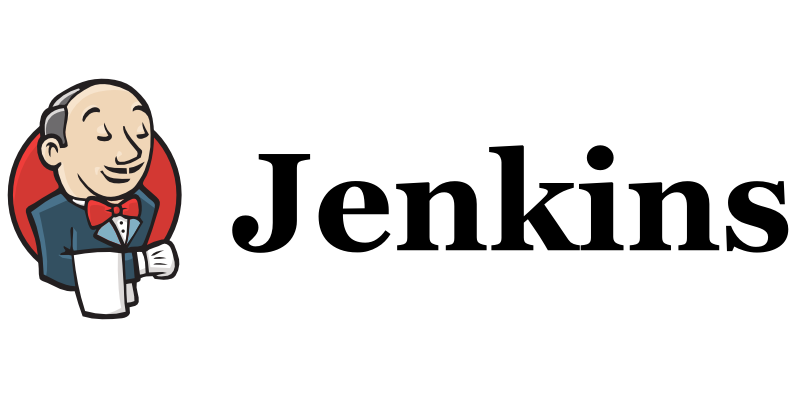Rancher Installation & Deployment in Kubernetes Clustor
Source – https://rancher.com/docs/rancher/v2.5/en/installation/install-rancher-on-k8s/ Rajesh KumarI’m a DevOps/SRE/DevSecOps/Cloud Expert passionate about sharing knowledge and experiences. I have worked at Cotocus. I share tech blog at DevOps School, travel stories at Holiday…
Read more »
Top 20 Tricks to Source a Quality Trainer for training?
Improve your linkedin Prfile- Recommend Each other++++++ Linkedin – Search Profile -> Connect them -> messages – engage Linkedin Post in Groups Linkedin Post in Top 10 Our Profile Linkedin…
Read more »Sales and Marketing Ideas and Tips
Idea 1 – Email Marketing is DEAD now. So dont focus on mass emails but use this a regular stuff. Idea 2 – Focus on your course pages and your…
Read more »Complete Data Science Certification Guide & tutorials
What is Data Science? In 1962, John Tukey portrayed a field he called “data analysis”, which looks like current data science. In 1985, C. F. Jeff Wu utilized the term…
Read more »
Rundeck Community Vs RunDeck Enterprise Vs RunDeck Cloud
What is Runbook? Rundeck is runbook automation that gives you and your colleagues self-service access to the processes and tools they need to get their job done. When used for…
Read more »DevOps vs DevSecOps Vs SRE?
Hello Friends, This is my initial version of compliations consisting of a list of tools which you should consider if you are planning to learn DevOps or DevSecOps or SRE….
Read more »What is Toil with SRE perspective?
What is Toil? Time Off in Lieu Exhausting Physical Labour. Work extremely hard or incessantly. Time off in lieu, otherwise known as TOIL, is when an employer offers time off…
Read more »SRE – Site Reliability Engineering Summary
SRE Concepts Remove Silos and help increase sharing and collaboration between the Development and Operations team Accidents are Normal. It is more profitable to focus on speeding recovery than preventing…
Read more »Toil Identification Checklist & Survery Question in SRE
Averaging over the past four weeks, approximately what fraction of your time did you spend on toil? Scale 0-100% How happy are you with the quantity of time you spend…
Read more »MySql Backup and Restore – A Complete Guide
Generate the backup of a single database Generate the backup of multiple databases or all the databases Generate the backup of database structure Generate the backup of a specific table…
Read more »How to Reset or Recover Forgotten mySql root Password
Recover Forgotten mySql root Password in Linux OLD method Resetting MySQL Root Password with XAMPP on Localhost How to change a mysql user password? Rajesh KumarI’m a DevOps/SRE/DevSecOps/Cloud Expert passionate…
Read more »Import all MySQL databases at one time in seperate file for Backup
Script Commands Rajesh KumarI’m a DevOps/SRE/DevSecOps/Cloud Expert passionate about sharing knowledge and experiences. I have worked at Cotocus. I share tech blog at DevOps School, travel stories at Holiday Landmark,…
Read more »EXPLORING SALESFORCE ARCHITECTURE AND APPLICATION DEVELOPMENT TOOLS
Excerpt: We have seen an incredible development in technology in recent years, ranging from mobile phones to smart applications, which have revolutionized human existence to a greater extent. Emerging technologies…
Read more »
What is Selendroid and How it works? An Overview and Its Use Cases
History & Origin of Selendroid The Selenium is a collection of different tools and has contributions from different notable people. The long history of the selenium project has different stages…
Read more »DevOps, DevSecOps, SRE, AiOps, MLOps, DataOps Courses and Certifications
DevOps Courses & Certification https://www.devopsschool.com/training/devops-training-hyderabad.html https://www.devopsschool.com/courses/agenda/devops/dev-sec-ops.html https://www.devopsschool.com/courses/agenda/devops/devops-training-course-Java.html https://www.devopsschool.com/courses/agenda/devops/devops-training-course-dot-net.html https://www.devopsschool.com/training/devops-training-bangalore.html https://www.devopsschool.com/training/devops-training-pune.html https://www.devopsschool.com/training/devops-training-mumbai.html https://www.devopsschool.com/training/devops-training-delhi.html https://www.devopsschool.com/training/devops-training-netherlands.html https://www.devopsschool.com/training/devops-training-kolkata.html https://www.scmgalaxy.com/courses/agenda/devops/devops-training-course-online.html https://www.scmgalaxy.com/courses/agenda/devops/devops-training-course-Java.html http://www.scmgalaxy.com/courses/agenda/devops/devops-training-course-dot-net.html http://www.scmgalaxy.com/courses/agenda/devops/devops-training-and-certification.html https://www.scmgalaxy.com/courses/agenda/devops/devops-training-course-online.html https://www.scmgalaxy.com/courses/agenda/devops/devops-training-course-Java.html http://www.scmgalaxy.com/courses/agenda/devops/devops-training-course-dot-net.html https://www.scmgalaxy.com/courses/agenda/devops/devops-training-and-certification.html https://www.devopsschool.com/courses/agenda/devops/devops-training-and-certification.html DevSecOps Courses & Certification https://www.scmgalaxy.com/courses/agenda/devops/dev-sec-ops.html https://www.scmgalaxy.com/courses/devsecops/index.html http://www.scmgalaxy.com/courses/agenda/devops/dev-sec-ops.html…
Read more »Complete Python Programming with Django Certification Guide & tutorials
What is Python Programming with Django? Python is a programming language and Django is a web framework built using Python as well as it is designed to simplify the creation…
Read more »What is Testlink and How it works? An Overview and Its Use Cases
History & Origin of Testlink TestLink was created by Chad Rosen, a software developer for Good Technology in the early 2000s. Rosen came up with the idea of creating a…
Read more »Complete Hashicorp Nomad Certification Guide & tutorials
What is Hashicorp Nomad? Hashicorp Nomad was introduced in November 2012 and the fouder is Noah Dentzel Brian Hahn Adam Miller. Nomad is a flexible scheduler and workload orchestrator that…
Read more »
What is TeamCity and How it works? An Overview and Its Use Cases
History & Origin of TeamCity TeamCity is a build management and continuous integration server from JetBrains. It was first released on October 2, 2006, and is commercial software and licensed…
Read more »Top 50 Pagerduty Interview Questions & Answer
1) If you were asked to review a colleague’s code that they had written, what key things would you look for? For this question, your interviewer will obviously be looking…
Read more »Complete Hashicorp Consul Certification Guide & tutorials
What is Hashicorp Consul? HashiCorp introduced Consul in April 2014. HashiCorp Consul is an open-source tool that solves complexities by offering service discovery, health checks, load balancing, a service graph,…
Read more »
What is Jenkins and How does it work? An Overview and Its Use Cases
History & Origin of Jenkins The Jenkins project was started in 2004 (originally called Hudson) by Kohsuke Kawaguchi, while he worked for Sun Microsystems. Kohsuke was a developer at Sun…
Read more »Subversion SVN Cheatsheet
Rajesh KumarI’m a DevOps/SRE/DevSecOps/Cloud Expert passionate about sharing knowledge and experiences. I have worked at Cotocus. I share tech blog at DevOps School, travel stories at Holiday Landmark, stock market…
Read more »SVN User Commands Reference
Available subcommands:addauthblame (praise, annotate, ann)catchangelist (cl)checkout (co)cleanupcommit (ci)copy (cp)delete (del, remove, rm)diff (di)exporthelp (?, h)importinfolist (ls)locklogmergemergeinfomkdirmove (mv, rename, ren)patchpropdel (pdel, pd)propedit (pedit, pe)propget (pget, pg)proplist (plist, pl)propset (pset, ps)relocateresolveresolvedrevertstatus (stat,…
Read more »